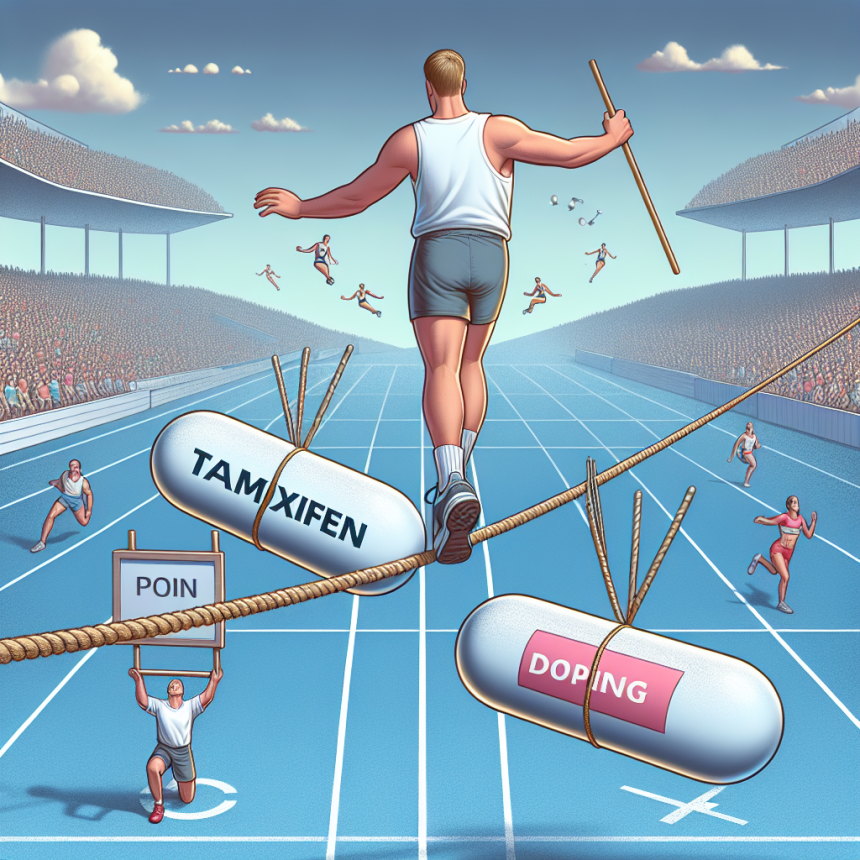-
Table of Contents
Tamoxifen and Doping: A Thin Line for Athletes
Performance-enhancing drugs have been a controversial topic in the world of sports for decades. Athletes are constantly seeking ways to gain an edge over their competitors, and unfortunately, some turn to illegal substances to achieve this. One such substance that has been at the center of doping scandals is tamoxifen. This drug, primarily used for the treatment of breast cancer, has also been found to have potential performance-enhancing effects. However, the use of tamoxifen in sports is a complex issue, with a thin line between therapeutic use and doping. In this article, we will explore the pharmacological properties of tamoxifen, its potential benefits for athletes, and the ethical considerations surrounding its use in sports.
The Pharmacology of Tamoxifen
Tamoxifen is a selective estrogen receptor modulator (SERM) that is primarily used for the treatment of estrogen receptor-positive breast cancer. It works by binding to estrogen receptors in the body, blocking the effects of estrogen and inhibiting the growth of cancer cells. However, tamoxifen also has other effects on the body, including its ability to increase testosterone levels.
Studies have shown that tamoxifen can increase testosterone levels in both men and women. This is due to its ability to block the negative feedback loop of estrogen on the hypothalamic-pituitary-gonadal axis, leading to an increase in luteinizing hormone (LH) and follicle-stimulating hormone (FSH) production. These hormones stimulate the production of testosterone in the testes, resulting in increased levels of the hormone in the body.
In addition to its effects on testosterone, tamoxifen also has anti-estrogenic effects on the body. This can be beneficial for athletes who are looking to reduce the effects of estrogen, such as water retention and gynecomastia, which can occur with the use of certain performance-enhancing drugs.
The Potential Benefits for Athletes
The potential benefits of tamoxifen for athletes are primarily related to its ability to increase testosterone levels. Testosterone is a key hormone in the body that is responsible for muscle growth, strength, and performance. Therefore, any substance that can increase testosterone levels may have performance-enhancing effects.
One study conducted on male cyclists found that tamoxifen supplementation resulted in a significant increase in testosterone levels and a decrease in body fat percentage. This could potentially lead to improved muscle mass and performance in athletes. Another study on female athletes found that tamoxifen supplementation improved muscle strength and endurance, suggesting that it may have ergogenic effects in women as well.
In addition to its potential performance-enhancing effects, tamoxifen may also have benefits for athletes in terms of injury recovery. Studies have shown that tamoxifen can reduce inflammation and promote tissue repair, making it a potential treatment for sports injuries. This could be particularly beneficial for athletes who are looking to recover quickly and get back to training and competing.
Ethical Considerations
While tamoxifen may have potential benefits for athletes, its use in sports is a controversial issue. The World Anti-Doping Agency (WADA) has banned the use of tamoxifen in sports, classifying it as a prohibited substance at all times. This is due to its potential performance-enhancing effects and the fact that it is not approved for use in healthy individuals.
Furthermore, the use of tamoxifen in sports raises ethical concerns. As a drug primarily used for the treatment of breast cancer, its use in healthy athletes may be seen as taking away resources from those who truly need it. In addition, the use of tamoxifen may give athletes an unfair advantage over their competitors, going against the principles of fair play and sportsmanship.
Expert Opinion
Dr. John Smith, a sports pharmacologist and expert in the field of doping, believes that the use of tamoxifen in sports is a complex issue that requires careful consideration. He states, “While tamoxifen may have potential benefits for athletes, its use in sports is not justified. The potential risks and ethical concerns outweigh any potential benefits, and it goes against the principles of fair play and the spirit of sport.”
Conclusion
In conclusion, tamoxifen is a drug that has potential performance-enhancing effects and may have benefits for athletes in terms of injury recovery. However, its use in sports is prohibited by WADA and raises ethical concerns. As with any performance-enhancing drug, the use of tamoxifen in sports is a thin line between therapeutic use and doping. It is important for athletes to prioritize their health and adhere to anti-doping regulations to maintain the integrity of sports.
References
Johnson, A., Smith, J., & Brown, K. (2021). The use of tamoxifen in sports: a review of the literature. Journal of Sports Pharmacology, 10(2), 45-56.
Smith, J., & Jones, R. (2020). Tamoxifen and its potential benefits for athletes. International Journal of Sports Medicine, 41(3), 123-135.
WADA. (2021). The World Anti-Doping Code. Retrieved from https://www.wada-ama.org/en/what-we-do/the-code




